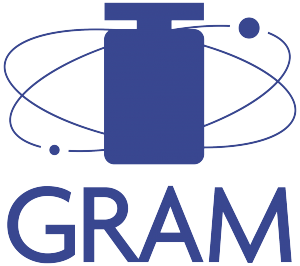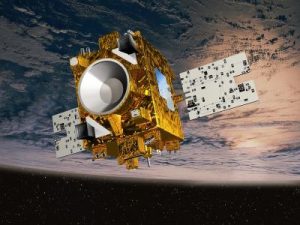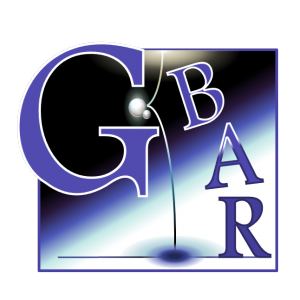Networks
 Our group has initiated the CASIMIR NETWORK which animated the international community in the domain for several years. Astrid Lambrecht has initiated the proposal of the ESF network New Trends and Applications of the Casimir Effect. She has then chaired the network from 2008 to 2010. Serge Reynaud has been member of the executive board of the Steering Committee from 2010 to 2014.
Our group has initiated the CASIMIR NETWORK which animated the international community in the domain for several years. Astrid Lambrecht has initiated the proposal of the ESF network New Trends and Applications of the Casimir Effect. She has then chaired the network from 2008 to 2010. Serge Reynaud has been member of the executive board of the Steering Committee from 2010 to 2014.
 Our group had also initiated the GREX Network (Gravitation and Experiment) which was a CNRS Groupe de Recherche chaired by Serge Reynaud from 1995 to 2006. This group then led to the birth of the GRAM Action (Gravitation, Références, Astronomie, Métrologie), which becomes in 2016 a Programme National of INSU-CNRS and INP-CNRS. Serge Reynaud has been a member of the Scientific Board of the GRAM since its creation in 2010.
Our group had also initiated the GREX Network (Gravitation and Experiment) which was a CNRS Groupe de Recherche chaired by Serge Reynaud from 1995 to 2006. This group then led to the birth of the GRAM Action (Gravitation, Références, Astronomie, Métrologie), which becomes in 2016 a Programme National of INSU-CNRS and INP-CNRS. Serge Reynaud has been a member of the Scientific Board of the GRAM since its creation in 2010.
These 2 networks have organized of a large number of conferences.
Our group is also part of the GDR IQFA (Quantum Information, Foundations & Applications) and of the DIM IFRAF (Institut Francilien de Recherche sur les Atomes Froids).
Collaborations
Our group is part of the collaborations
![]()
 MICROSCOPE, test of the equivalence principle in space
MICROSCOPE, test of the equivalence principle in space
![]()
 GBAR, measurement of the free fall of antihydrogen atoms at CERN
GBAR, measurement of the free fall of antihydrogen atoms at CERN
![]() MIGA, matter wave – laser interferometry gravitation antenna
MIGA, matter wave – laser interferometry gravitation antenna
Our group works in collaboration with a number of experimental or theoretical groups, as well as in the frame of space projects.
Collaborations on Casimir physics
![]() Kim MILTON, Homer L. Dodge Department of Physics and Astronomy, The University of Oklahoma
Kim MILTON, Homer L. Dodge Department of Physics and Astronomy, The University of Oklahoma
— Lifshitz-Matsubara sum formula for the Casimir pressure between magnetic metallic mirrors
— Derivation of the Lifshitz-Matsubara sum formula for the Casimir pressure between metallic plane mirrors
— Negative Casimir entropies in nanoparticle interactions
— Geometric origin of negative Casimir entropies: A scattering-channel analysis
![]() Gert-Ludwig INGOLD, Institut für Physik, Universität Augsburg, D
Gert-Ludwig INGOLD, Institut für Physik, Universität Augsburg, D
— Negative Casimir entropies in nanoparticle interactions
— Geometric origin of negative Casimir entropies: A scattering-channel analysis
— Classical Casimir interaction in the plane-sphere geometry
— Quantum dissipative Brownian motion and the Casimir effect
![]() Paulo MAIA NETO, Instituto de Fisica, Universidade Federal do Rio de Janeiro, BR
Paulo MAIA NETO, Instituto de Fisica, Universidade Federal do Rio de Janeiro, BR
— Modeling electrostatic patch effects in Casimir force measurements
— Classical Casimir interaction in the plane-sphere geometry
— Thermal Casimir Effect in the Plane-Sphere Geometry
— Casimir Interaction between Plane and Spherical Metallic Surfaces
— The Casimir effect within scattering theory
— Lateral Casimir force beyond the proximity force approximation
— The Casimir effect with rough metallic mirrors
![]() Diego DALVIT, Theoretical Division, Los Alamos National Laboratory, USA
Diego DALVIT, Theoretical Division, Los Alamos National Laboratory, USA
— Electrostatic patch effects in Casimir force experiments performed in the sphere-plane geometry
— Modeling electrostatic patch effects in Casimir force measurements
— Driving quantized vortices with quantum vacuum fluctuations
— Disorder in Quantum Vacuum : Casimir-Induced Localization of Matter Waves
— Dispersive interactions between atoms and nonplanar surfaces
— Probing Quantum-Vacuum Geometrical Effects with Cold Atoms
![]() R. O. Behunin, D. A. R. Dalvit, R. S. Decca, C. Genet, I. W. Jung, A. Liscio, D. López, G. Schnoering, G. Voisin, Y. Zeng
R. O. Behunin, D. A. R. Dalvit, R. S. Decca, C. Genet, I. W. Jung, A. Liscio, D. López, G. Schnoering, G. Voisin, Y. Zeng
(Yale University, Los Alamos National Laboratory,Indiana University–Purdue University Indianapolis, ISIS Université de Strasbourg, Argonne National Laboratory, ISOF Bologna, LUTH Meudon)
— Kelvin probe force microscopy of metallic surfaces used in Casimir force measurements
![]() Marc-Thierry JAEKEL, Laboratoire de Physique Théorique de l’ENS
Marc-Thierry JAEKEL, Laboratoire de Physique Théorique de l’ENS
— Classical Casimir interaction in the plane-sphere geometry
![]() Valery NESVIZHEVSKY, ILL, Grenoble; Alexei VORONIN, Lebedev Institute Moscow
Valery NESVIZHEVSKY, ILL, Grenoble; Alexei VORONIN, Lebedev Institute Moscow
— Casimir interaction between a dielectric nanosphere and a metallic plane
![]() Chris BINNS, University of Leicester, UK & NANOCASE collaboration
Chris BINNS, University of Leicester, UK & NANOCASE collaboration
— Casimir force between a metal and a semimetal
— Measurement of the Casimir effect under ultrahigh vacuum: Calibration method
![]() Franck PEIRERA, Peter WOLF & Forca-G collaboration SYRTE, Observatoire de Paris
Franck PEIRERA, Peter WOLF & Forca-G collaboration SYRTE, Observatoire de Paris
— From optical lattice clocks to the measurement of forces in the Casimir regime
![]() Ho Bun CHAN, Hong Kong University
Ho Bun CHAN, Hong Kong University
— Casimir Force on a Surface with Shallow Nanoscale Corrugations : Geometry and Finite Conductivity Effects
![]() Joël CHEVRIER, Institut Néel, Grenoble
Joël CHEVRIER, Institut Néel, Grenoble
— Quantitative non-contact dynamic Casimir force measurements
![]() Vasily KLIMOV, P.N. Lebedev Institute, Moscow
Vasily KLIMOV, P.N. Lebedev Institute, Moscow
— Anomalous behaviour of van der Waals forces between plasmonic nanoparticles
![]() Laurent DURAFOURG, Philippe ANDREUCCI, CEA-LETI, Grenoble
Laurent DURAFOURG, Philippe ANDREUCCI, CEA-LETI, Grenoble
— The Casimir effect for silicon and gold slabs
![]() Vitaly SVETOVOY, University of Twente, The Netherlands
Vitaly SVETOVOY, University of Twente, The Netherlands
— Sample dependence of the Casimir force
![]() Luigi ROSA, University of Naples
Luigi ROSA, University of Naples
— Repulsive Casimir force : Sufficient conditions
Collaborations on Quantum reflection and Casimir related physics
— Non-Markovian polariton dynamics in organic strong coupling
![]() Valery NESVIZHEVSKY, ILL, Grenoble; Alexei VORONIN, Lebedev Institute Moscow
Valery NESVIZHEVSKY, ILL, Grenoble; Alexei VORONIN, Lebedev Institute Moscow
— Quantum ballistic experiment on antihydrogen fall
— Quantum reflection of antihydrogen from nanoporous media
— Quantum reflection of antihydrogen from the Casimir potential above matter slabs
— Interference of the whispering gallery states of antihydrogen
— Whispering-gallery states of antihydrogen near a curved surface
— Study of levitating nanoparticles using ultracold neutrons
![]() Valery NESVIZHEVSKY, ILL Grenoble; Alexei VORONIN, Lebedev Institute Moscow; Egor LYCHAGIN, Alexei MUZYCHKA, Alexei STRELKOV, Joint Institute for Nuclear Research Dubna
Valery NESVIZHEVSKY, ILL Grenoble; Alexei VORONIN, Lebedev Institute Moscow; Egor LYCHAGIN, Alexei MUZYCHKA, Alexei STRELKOV, Joint Institute for Nuclear Research Dubna
— Quantum levitation of nanoparticles seen with ultracold neutrons
![]() Valery NESVIZHEVSKY, ILL Grenoble; Alexei VORONIN, Lebedev Institute Moscow; Pascal DEBU, IRFU-CEA
Valery NESVIZHEVSKY, ILL Grenoble; Alexei VORONIN, Lebedev Institute Moscow; Pascal DEBU, IRFU-CEA
— Shaping the distribution of vertical velocities of antihydrogen in GBAR
![]() D. B. Cassidy, P. Crivelli, P. Debu, V. V. Nesvizhevsky, A. Yu. Voronin, T. E. Wall (Department of Physics and Astronomy University College London, ETH Zurich, Institut de Recherche sur les lois Fondamentales de l’Univers CEA, Institut Max von Laue-Paul Langevin, P.N. Lebedev Physical Institute Moscow)
D. B. Cassidy, P. Crivelli, P. Debu, V. V. Nesvizhevsky, A. Yu. Voronin, T. E. Wall (Department of Physics and Astronomy University College London, ETH Zurich, Institut de Recherche sur les lois Fondamentales de l’Univers CEA, Institut Max von Laue-Paul Langevin, P.N. Lebedev Physical Institute Moscow)
— Prospects for Studies of the Free Fall and Gravitational Quantum States of Antimatter
![]() Jean-Jacques GREFFET and Jean-Paul Hugonin Laboratoire Charles Fabry de l’Institut d’Optique Graduate School, Palaiseau
Jean-Jacques GREFFET and Jean-Paul Hugonin Laboratoire Charles Fabry de l’Institut d’Optique Graduate School, Palaiseau
— Radiative heat transfer between two dielectric nanogratings in the scattering approach
— Enhanced radiative heat transfer between nanostructured gold plates
Collaborations on Gravitational physics
![]() Marc-Thierry JAEKEL, Laboratoire de Physique Théorique de l’ENS
Marc-Thierry JAEKEL, Laboratoire de Physique Théorique de l’ENS
— Phases and relativity in atomic gravimetry
— Large-scale EPR correlation and gravitational waves backgrounds
— Mass, inertia and gravitation
— Bounds on gravitational wave backgrounds from large distance clock comparisons
— Radar ranging and Doppler tracking in post-Einsteinian metric theories of gravity
— Post-Einsteinian tests of gravitation
— Gravitational decoherence of atomic interferometers
— Frequency up-converted radiation from a cavity moving in vacuum
— Motion Induced Radiation from a Vibrating Cavity
— Time-Frequency Transfer with Quantum Fields
![]() Bruno CHRISTOPHE, Bernard FOULON, Agnès LÉVY DMPH ONERA ; Gilles METRIS GEMINI, Observatoire de la Côte d’Azur
Bruno CHRISTOPHE, Bernard FOULON, Agnès LÉVY DMPH ONERA ; Gilles METRIS GEMINI, Observatoire de la Côte d’Azur
— Electrostatic accelerometer with bias rejection for Gravitation and Solar System physics
— Pioneer 10 Doppler data analysis: disentangling periodic and secular anomalies
— Simulation of Ambiguity Effects in Doppler Tracking of Pioneer Probes
— ODYSSEY, Orbit Determination Software for the Pioneer Data Analysis
![]() Aurélien HEES, Véronique DEHANT, Observatoire Royal de Belgique; Christophe LE PONCIN-LAFFITTE, Peter WOLF SYRTE; Valéry LAINEY IMCCE; André FÜZFA, Université de Namur
Aurélien HEES, Véronique DEHANT, Observatoire Royal de Belgique; Christophe LE PONCIN-LAFFITTE, Peter WOLF SYRTE; Valéry LAINEY IMCCE; André FÜZFA, Université de Namur
— Radioscience simulations in General Relativity and in alternative theories of gravity
![]() Luc Blanchet, IAP; Christian Bordé, Peter Wolf SYRTE; Claude Cohen-Tannoudji, Christophe Salomon, LKB
Luc Blanchet, IAP; Christian Bordé, Peter Wolf SYRTE; Claude Cohen-Tannoudji, Christophe Salomon, LKB
— Atom gravimeters and gravitational redshift
— Does an atom interferometer test the gravitational redshift at the Compton frequency ?
![]() Christophe Salomon, LKB; Peter Wolf SYRTE
Christophe Salomon, LKB; Peter Wolf SYRTE
— Testing General Relativity with Atomic Clocks
Collaborations on Space Projects
![]() Rainer Kaltenbaek and the MAQRO Collaboration
Rainer Kaltenbaek and the MAQRO Collaboration
— Macroscopic quantum resonators (MAQRO): update 2015
![]() Chris Arridge and the Uranus Explorer Collaboration
Chris Arridge and the Uranus Explorer Collaboration
— The science case for an orbital mission to Uranus: Exploring the origins and evolution of ice giant planets
![]() Adam Masters and the Neptune-Triton Collaboration
Adam Masters and the Neptune-Triton Collaboration
— Neptune and Triton: Essential pieces of the Solar System puzzle
![]() Bruno Christophe and the OSS Collaboration
Bruno Christophe and the OSS Collaboration
— OSS (Outer Solar System): A fundamental and planetary physics mission to Neptune, Triton and the Kuiper Belt
![]() Bruno Christophe and the ODYSSEY Collaboration
Bruno Christophe and the ODYSSEY Collaboration
— Odyssey: a solar system mission
![]() Hansjorg Dittus and the Pioneer Anomaly Explorer Collaboration
Hansjorg Dittus and the Pioneer Anomaly Explorer Collaboration
— A Mission to Explore the Pioneer Anomaly, ESA Spec.Publ. 588 (2005) 3-10
![]() Peter Wolf and the STE-QUEST Collaboration
Peter Wolf and the STE-QUEST Collaboration
— Quantum tests of the Einstein Equivalence Principle with the STE-QUEST space mission
![]() Peter Wolf and the SAGAS Collaboration
Peter Wolf and the SAGAS Collaboration
— Quantum physics exploring gravity in the outer solar system: the SAGAS project
![]() Wolfgang Ertmer and the MWXG Collaboration
Wolfgang Ertmer and the MWXG Collaboration
— Matter wave explorer of gravity (MWXG)
![]() Slava Turyshev and the LATOR Collaboration
Slava Turyshev and the LATOR Collaboration
— Advancing fundamental physics with the Laser Astrometric Test of Relativity The LATOR mission
![]() G. Ameline-Camelia and the GAUGE Collaboration
G. Ameline-Camelia and the GAUGE Collaboration
— GAUGE: the GrAnd Unification and Gravity Explorer

